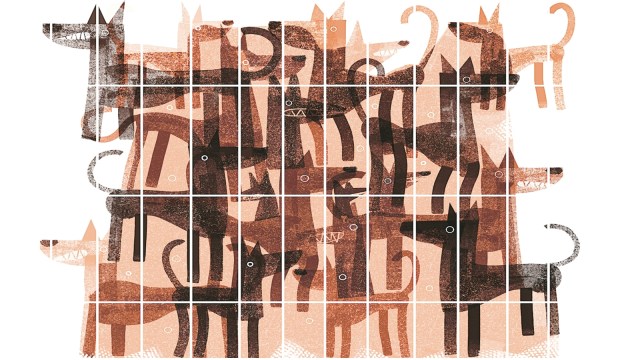
India’s Supreme Court has once again passed an order on community dogs, and this time, it is regressive, destructive, and disappointing. It is neither “balanced” nor “humane”. It is an anti-animal, anti-science, and anti-law directive that threatens to undo decades of progress made under the Animal Birth Control (ABC) programme. It is as bad as, if not worse than, the infamous order of August 11, because it is anti-people as well.
Then, the Court had directed that all community dogs be picked up and confined to shelters within eight weeks, an order so absurd that it collapsed under its own impracticality. Now, months later, the Supreme Court has reiterated a version of the same order, despite being aware of the data showing that it cannot be implemented. That makes this one far worse, because it comes with knowledge. The Court knows that there is neither the infrastructure, nor the manpower, nor the budget to carry out such a directive.
India has approximately 14.72 lakh schools, 53,000 colleges, and nearly 70,000 hospitals. As of March 2020, there were 9,274 railway stations and tens of thousands of bus stands across the country. Add to that thousands of sports complexes, all of which the Court now expects dogs to be removed from and permanently housed in shelters. But where are these shelters? Where are the funds, the veterinarians, the food, the staff?
As of March 2025, India has 780 districts, and most do not have even a single functional Animal Birth Control centre. The few that exist are unable to handle their sterilisation targets, let alone provide lifelong housing for dogs. And even if, by some miracle, every single dog could be confined, the vacuum effect would undo it all. The moment a territory is vacated, new, unvaccinated, unsterilised dogs move in, bringing fresh litters, and a renewed cycle of conflict.
To make matters worse, the latest directive even calls for fencing around bus stops, railway stations, and other spaces to keep dogs out. But how do you fence a bus stop? How do you fence a railway station with open platforms and multiple entry points? Will you post a guard at every gate, 24 hours a day? Where will the money come from for this fantasy, when there isn’t enough to house the poor or feed the hungry? India cannot build walls around its streets.
The Court has also directed that cattle and dogs be picked up from the highways. While this sounds ideal in theory, we do not have the space to accommodate even a fraction of them. The gaushalas are already overwhelmed with the discarded cows from dairies, abandoned once they can no longer produce milk. This circles right back to the unregulated and exploitative state of the dairy industry, and the proliferation of unlicensed dairy units across the country.
This order shows a huge lack of respect for the government and people. It reflects panic and the abdication of responsibility. It upholds the dog sterilisation laws — and yet breaks them. The order is absurd even in law.
When an order cannot be implemented, it loses the character of law and becomes an act of administrative violence. Every municipality now forced to “remove dogs” without a place to take them will inevitably resort to killing or illegal relocation. Or worse still, it will throw them on the roads and make them extremely unsafe for pedestrians.
The Court knows the truth: India lacks shelter infrastructure. Had that not been the case, we would have had a functional ABC centre in every district by now. If it had been capable of doing anything, it would have done, but no initiative has been taken despite previous directions, existing rules, orders, and guidelines. Yet the directive still insists on “removal without re-release”, a decision made in conscious disregard of ground realities.
It is as if the Court expects lakhs of dogs to disappear simply because it has said so. The Prevention of Cruelty to Animals Act still stands. Hitting, chasing, starving, or torturing animals remains a punishable offence under the Bharatiya Nyaya Sanhita. “Removal without release” is simply a euphemism for killing. With no shelters to take them to, what does the Court expect municipalities to do?
The humane and scientific approach is clear: Catch-Neuter-Vaccinate-Release (CNVR). Global research mirrors this. Every country that has truly wanted to solve its community dog problem has done so through sterilisation, vaccination, and release. Wherever this model has been implemented, dog populations, rabies cases, and dog-human conflict have fallen measurably. Bhutan launched its nationwide CNVR programme in 2009 and announced full sterilisation coverage in 2023. The World Health Organisation and the World Organisation for Animal Health both endorse this as the only humane, effective, and scientifically sound method of population control. Every country that resorted to killing or confinement has failed; every country that turned to sterilisation has succeeded.
As someone who has spent a lifetime working for animals, I can say this with absolute certainty: This order will not protect citizens; it will only create cruelty on a scale unseen before. It will not solve the community dog conflict; it will inflame it.
What is needed is to reduce the population through sterilisation. The government has not put even one rupee into this 25 years after making the law. If the Supreme Court had really wanted to solve the problem, it would have asked the Centre to allocate money, build ABC centres, train 1,500 NGOs and start the programme properly. Within two years, we would have half the population of dogs and less than a quarter of the bites.
India’s greatness will never be measured by how it treats its powerful, but by how it treats its powerless. And right now, our courts have failed that test.
The writer is an animal rights activist and former minister